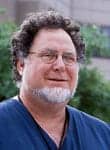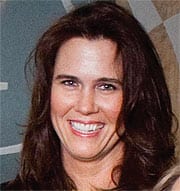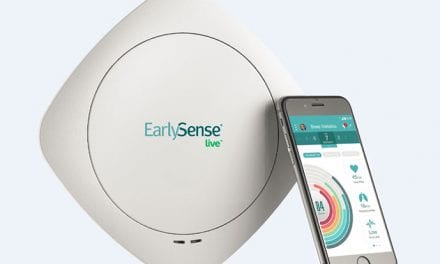 |
The new AASM Manual for the Scoring of Sleep and Associated Events: Rules, Terminology and Technical Specifications1 represents a giant step toward standardization of clinical polysomnography. Some of the challenges for making it the “New Standardized Manual” can be easily met while others will require more effort. Looking at the challenges faced approximately 40 years ago when Allan Rechtschaffen and Anthony Kales developed A Manual of Standardized Terminology, Techniques and Scoring System for Sleep Stages of Human Subjects, the sleep community can learn valuable lessons about how to proceed with consensus and acceptance of the new AASM Scoring Manual.
Background
In 1968, A Manual of Standardized Terminology, Techniques and Scoring System for Sleep Stages of Human Subjects was published by the United States Government Printing Office.2 This “standardized manual” was developed by an ad hoc committee of sleep experts and was chaired by Rechtschaffen and Kales; the manual thereafter was often referred to as “R&K.” R&K defined recording technique, terminology, and scoring rules for normal human sleep that lasted 40 years. The key word here is normal.
As the need arose to detect sleep pathophysiologies associated with specific sleep disorders, clinical researchers developed additional guidelines. One of the best compendia of additional rules was to be found in the book Sleeping and Waking Disorders: Indications and Techniques, edited by Christian Guilleminault.3 This volume contained rules for scoring breathing, leg movements, abnormal EEG, nocturnal tumescence, and other sleep phenomena. This book became a standard desk reference and citation for those of us engaged in clinical sleep research; however, it was out of print by the next decade.
Later, the rules for scoring central nervous system (CNS) arousals were formalized by the American Sleep Disorders Association (ASDA) Atlas Task Force and published in the journal Sleep.4 A year later, the leg movement scoring rules from Richard Coleman’s chapter in Indications and Techniques were reviewed, slightly modified, illustrated, and endorsed by the Atlas Task Force.5 Finally, the “Chicago” group considered sleep-related breathing and proposed a set of guidelines that were adopted as a recommended clinical research technique.6 Even as scoring rules were evolving with changing methodology, no official guidelines emerged concerning computerized polysomnography. By the millennium, sleep recordings had migrated from special-purpose, analog-circuit, EEG machines attached to paper chart drives to digital amplifiers interfaced with personal computers programmed to capture, display, and manipulate data. Until the introduction of the new AASM Scoring Manual, no recommendations from professional organizations have specified even the most basic, minimal operational characteristics for such machinery in application for polysomnography.
The New Manual
In a bold move, the American Academy of Sleep Medicine (AASM) initiated a large-scale project to revise the Standardized Manual and develop a unified guideline for terminology, recording method, and scoring rules for sleep-related phenomena. A task force was also formed to review and recommend guidelines related to functional aspects of digital system polysomnography. The following illustrates the areas where modifications occurred.
- The task force concerned with staging renamed the stages, combined stages 3 and 4, and eliminated stage “movement time.” Also, some of the “smoothing rules” governing specifics of stage transition were simplified. More controversial, perhaps, was the mandate that an additional EEG channel (from a frontal derivation) be routinely recorded.
- Recording and scoring of CNS arousals were essentially re-endorsed without modification.
- Leg movement scoring underwent minor modification and clarification without major changes. More significant, however, was the addition of rudimentary approaches to scoring other sleep-related movements, including teeth grinding, hypnagogic foot tremor, excessive fragmentary myoclonus, and rhythmic movement disorders.
- The respiratory task force managed to formalize technique and define sleep apnea episodes. For hypopnea, the recommended definition accords with Medicare’s specifications requiring an associated 4% drop in oxygen saturation. An optional definition that considers events with either desaturation (3%) or arousal is also provided (and accords better with how clinical sleep specialists traditionally defined hypopnea). Rules for scoring respiratory events in children were also developed and included.
- Newly covered is a list of definitions of important electrocardiographic events that should be delineated, tabulated, and reported as part of a comprehensive polysomnographic assessment.
- Finally, the digital PSG task force made recommendations concerning specifications for digital recordings, display, reporting, and operational characteristics. The body of work and new recommendations and guidelines were published in a single volume entitled the AASM Manual for the Scoring of Sleep and Associated Events: Rules, Terminology and Technical Specifications.1
Challenges for the Future
The main challenge for making this long-awaited and much-needed guidebook the New Standardized Manual will be consensus and acceptance. This challenge was also the primary challenge facing the previous manual, and the framers of that work were keenly aware of this fact. Rumor had it (and was confirmed by Rechtschaffen) that during the deliberations of the ad hoc committee in the 1960s, Rechtschaffen barred the meeting room door and declared, “No one can leave until we all agree!” Because of Rechtschaffen’s demand that consensus take place, the framers were eventually able to come to an agreement.
While it may not be immediately apparent, this was the key to the original standardized manual’s success. If each committee member had returned to their respective laboratories and continued to use their own home-grown methods, the R&K manual would merely be an asterisk in the history of sleep medicine. Furthermore, we would still be discussing synchronized sleep, paradoxical sleep, d-sleep, orthodox sleep, desynchronized sleep, and dreaming sleep.
The second challenge will be disambiguation of some of the rules and terminology. For example, frontal EEG recordings are mandated for routine use for determining slow wave sleep, now called N3. However, the somnologist can choose between monopolar or bipolar derivations. Furthermore, minimum amplitude criteria are specified, but not differentially, for the two recording types.
The third challenge to acceptance will be influenced by how the AASM manual responds to future needs. As with all projects, particularly ambitious ones, there are always things that have not been fully covered.
Max Hirshkowitz, PhD, DABSM, is the director of the Sleep Disorders and Research Center of the Veterans Affairs Medical Center in Houston. He is also an associate professor in both the Department of Medicine and Menninger Department of Psychiatry at Baylor College of Medicine, where he is training director of the Sleep Medicine Fellowship Program. He can be reached at [email protected].
References
- AASM Manual for the Scoring of Sleep and Associated Events: Rules, Terminology and Technical Specifications. Westchester, Ill: American Academy of Sleep Medicine; 2007.
- Rechtschaffen A, Kales A. A Manual of Standardized Terminology, Techniques and Scoring System for Sleep Stages of Human Subjects. Washington, DC: US Government Printing Office; 1968. NIH Publication No. 204.
- Guilleminault C, ed. Sleeping and Waking Disorders: Indications and Techniques. Menlo Park, Calif: Addison-Wesley; 1982.
- Arousal Scoring ASDA Report. Bonnet M, Carley D, Carskadon M, et al. EEG arousals: scoring rules and examples. Sleep. 1992;15:173-184.
- PLMS ASDA Report. Bonnet M, Carley D, Carskadon M, et al. Recording and scoring leg movements. Sleep. 1993;16:748-759.
- AASM Task Force. Sleep-related breathing disorders in adults. Recommendations for Syndrome definition and measurement techniques in clinical research. Sleep. 1999;22:667-689.





